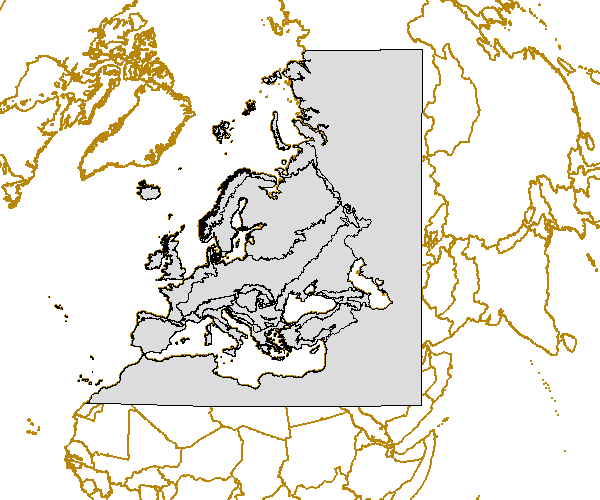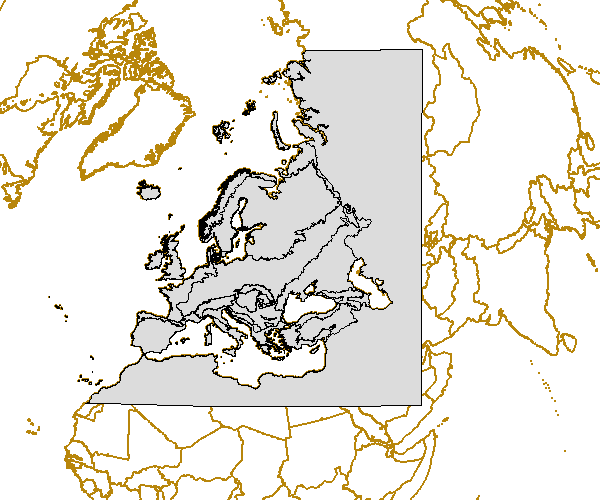Biota
Type of resources
Available actions
Topics
INSPIRE themes
Keywords
Contact for the resource
Provided by
Years
Formats
Representation types
Update frequencies
status
Scale
Resolution
-
DK INSPIRE SD Generelle artsfund (ln)
-

The biogeographical regions dataset contains the official delineations used in the Habitats Directive (92/43/EEC) and for the EMERALD Network set up under the Convention on the Conservation of European Wildlife and Natural Habitats (Bern Convention).
-

The biogeographical regions dataset contains the official delineations used in the Habitats Directive (92/43/EEC) and for the EMERALD Network set up under the Convention on the Conservation of European Wildlife and Natural Habitats (Bern Convention). The structure of the attribute table has been changed in this revised version. The mapping from old field names to new ones is as follows: NAME -> short_name ABBRE -> pre_2012 code -> code label -> name
-

The verified habitat samples used are derived from the Braun-Blanquet database (http://www.sci.muni.cz/botany/vegsci/braun_blanquet.php?lang=en) which is a centralised database of vegetation plots and comprises copies of national and regional databases using a unified taxonomic reference database.
-

The modelled suitability for the EUNIS habitat type is an indication of where conditions are favourable for the habitat type based on sample plot data (Braun-Blanquet database) and the Maxent software package. The modelled suitability map may be used as a proxy for the geographical distribution of the habitat type. Note however that it is not representing the actual distribution of the habitat type. Also note that predictions are less reliable due to data deficiency in the eastern part of Europe, and to a lesser extent to the Scandinavian countries. Geographic restriction for plot observations: n/a Remarks: Prediction in Germany should be ignored. Prediction in eastern part of Europe (Caucasus) uncertain due to lack of data for that area.
-

The modelled suitability for the EUNIS habitat type is an indication of where conditions are favourable for the habitat type based on sample plot data (Braun-Blanquet database) and the Maxent software package. The modelled suitability map may be used as a proxy for the geographical distribution of the habitat type. Note however that it is not representing the actual distribution of the habitat type. Also note that predictions are less reliable due to data deficiency in the eastern part of Europe, and to a lesser extent to the Scandinavian countries. Geographic restriction for plot observations: n/a Remarks: Prediction in eastern part of Europe uncertain due to lack of data for that area.
-

The modelled suitability for the EUNIS habitat type is an indication of where conditions are favourable for the habitat type based on sample plot data (Braun-Blanquet database) and the Maxent software package. The modelled suitability map may be used as a proxy for the geographical distribution of the habitat type. Note however that it is not representing the actual distribution of the habitat type. Also note that predictions are less reliable due to data deficiency in the eastern part of Europe, and to a lesser extent to the Scandinavian countries. Geographic restriction for plot observations: n/a Remarks: Poor prediction for Spain due to lack of data. Spartium junceum actually occurs throughout Spain. Prediction in eastern part of Europe (Turkey) uncertain due to lack of data for that area.
-

The verified habitat samples used are derived from the Braun-Blanquet database (http://www.sci.muni.cz/botany/vegsci/braun_blanquet.php?lang=en) which is a centralised database of vegetation plots and comprises copies of national and regional databases using a unified taxonomic reference database.
-

The verified habitat samples used are derived from the Braun-Blanquet database (http://www.sci.muni.cz/botany/vegsci/braun_blanquet.php?lang=en) which is a centralised database of vegetation plots and comprises copies of national and regional databases using a unified taxonomic reference database.
-

The modelled suitability for the EUNIS habitat type is an indication of where conditions are favourable for the habitat type based on sample plot data (Braun-Blanquet database) and the Maxent software package. The modelled suitability map may be used as a proxy for the geographical distribution of the habitat type. Note however that it is not representing the actual distribution of the habitat type.
 RUC Geo-Data catalogue
RUC Geo-Data catalogue